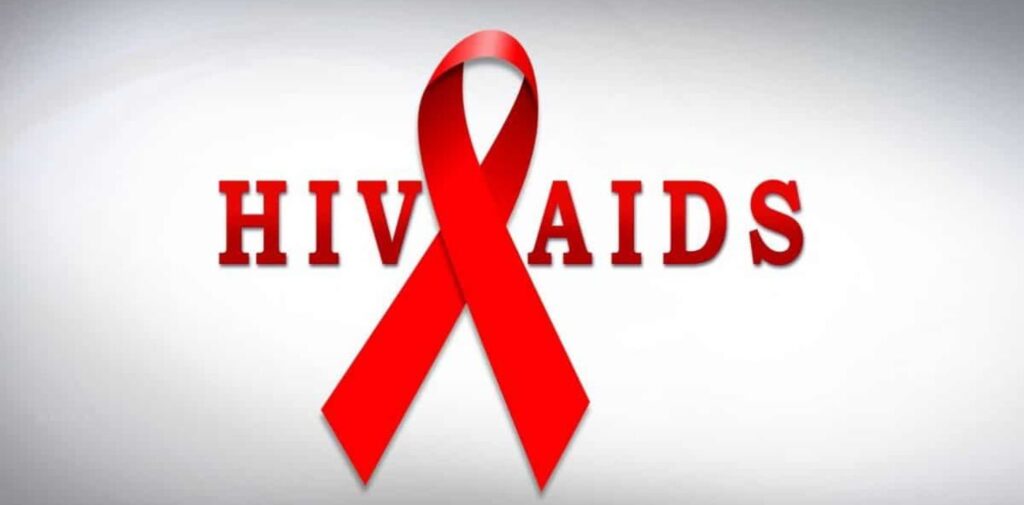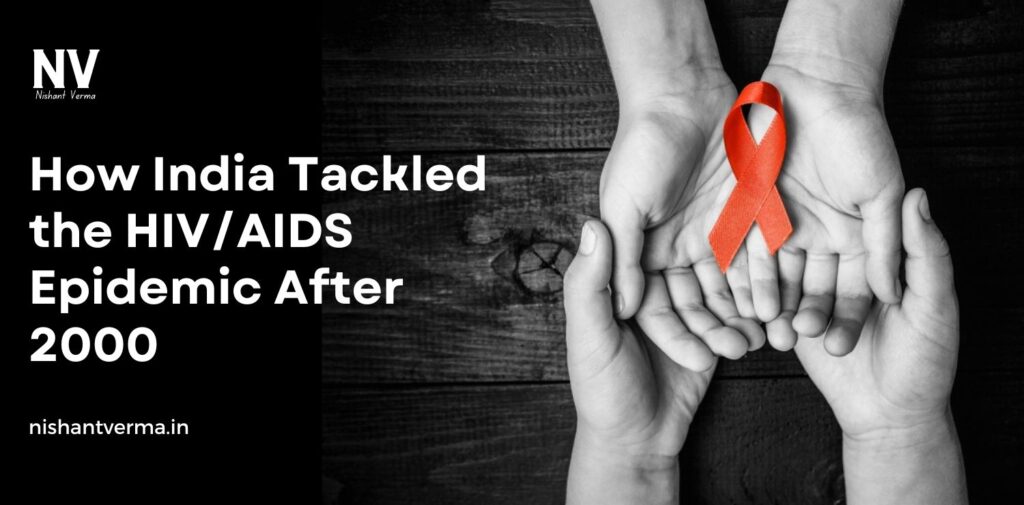India has faced numerous challenges over the years, but one of the most pressing public health issues it confronted was the HIV/AIDS epidemic. The country’s efforts to combat HIV/AIDS post-2000 have been significant and transformative, involving a combination of government initiatives, awareness programs, medical advancements, and global partnerships. In this article, we will explore how India tackled the HIV/AIDS epidemic, the progress made, and the continued efforts required to ensure a healthy future for its citizens.
Understanding the HIV/AIDS Epidemic in India
HIV (Human Immunodeficiency Virus) is a virus that attacks the immune system, and if untreated, can lead to AIDS (Acquired Immunodeficiency Syndrome). The epidemic began in India in the late 1980s, and by the 1990s, the country was facing a growing health crisis. The virus primarily spread through high-risk behaviors such as unprotected sex, sharing of contaminated needles, and through blood transfusions.
By 2000, the situation had become alarming. India had a large number of people living with HIV, especially in states like Maharashtra, Tamil Nadu, Andhra Pradesh, and Karnataka. The social stigma surrounding HIV/AIDS, limited awareness, and lack of access to treatment and prevention methods made the problem even more challenging.

Government Initiatives and Policies
The government of India recognized the severity of the epidemic and responded with several key initiatives. The National AIDS Control Program (NACP) was established in 1992, and by the year 2000, the program had expanded and evolved into its second phase. NACP aimed at preventing the spread of HIV, providing care and support to those living with the virus, and promoting awareness and education across the country.
One of the most important steps taken by the government was the creation of the National AIDS Control Organisation (NACO) in 1992. NACO became responsible for implementing policies and coordinating efforts across various sectors to address HIV/AIDS in India. The focus of NACP and NACO was on reducing the transmission of HIV, particularly among high-risk groups such as sex workers, men who have sex with men (MSM), and intravenous drug users.
By the early 2000s, the government also launched several national campaigns aimed at raising awareness about HIV prevention. These campaigns used media outlets like television, radio, and newspapers to educate the public about the importance of using condoms, safe sex practices, and getting tested for HIV.
Access to Treatment and Antiretroviral Therapy (ART)
One of the most significant steps in India’s fight against HIV/AIDS after 2000 was the widespread availability of antiretroviral therapy (ART). ART is a combination of medicines that, when taken regularly, suppress the virus, allowing people living with HIV to lead healthier lives and preventing the transmission of HIV to others.
In 2004, India made a groundbreaking decision to provide ART free of cost to those who needed it. This decision, along with efforts to expand ART centers across the country, played a pivotal role in the fight against the epidemic. The availability of ART, particularly in government-run clinics and hospitals, significantly improved the quality of life for people living with HIV and reduced the number of AIDS-related deaths in the country.
India’s health system faced challenges in ensuring that ART was accessible to all who needed it, especially in rural and remote areas. However, through government programs and partnerships with NGOs and international organizations, ART became widely available by the mid-2000s. By 2017, more than 2 million people were receiving ART in India, making the country one of the largest providers of ART in the world.

Prevention Programs and Awareness Campaigns
In addition to providing treatment, the Indian government and various non-governmental organizations (NGOs) have focused heavily on HIV prevention programs. Prevention has always been a cornerstone of India’s HIV response, with efforts directed at educating vulnerable populations about how to reduce the risk of HIV transmission.
One of the major prevention strategies was the promotion of condom use. Condoms are one of the most effective methods to prevent the spread of HIV, and India launched large-scale condom promotion campaigns. These campaigns focused on educating both men and women about the importance of using condoms in preventing HIV, especially among high-risk groups such as sex workers, truck drivers, and migrant laborers.
Another major prevention effort was targeted at high-risk groups, including sex workers, men who have sex with men (MSM), and intravenous drug users. NACO and several NGOs worked with these populations to provide education, promote safe practices, and distribute free condoms and clean needles. Harm-reduction programs, such as needle exchange programs for drug users, were implemented to reduce the transmission of HIV among people who inject drugs.
The government also launched awareness campaigns to reduce stigma and discrimination associated with HIV. These campaigns were designed to educate the general public about HIV transmission and to encourage people to get tested and seek help without fear of discrimination. Awareness campaigns on HIV prevention were carried out through television, radio, print media, and even on social media platforms.
Role of Non-Governmental Organizations (NGOs)
NGOs have played a critical role in India’s fight against HIV/AIDS, working alongside the government to implement awareness campaigns, provide medical care, and support affected communities. These organizations have been instrumental in reaching out to marginalized and high-risk groups who might otherwise not have access to prevention programs or treatment services.
NGOs such as the Bharatiya Parivarik Kalyan Sansthan (BPKS), the Maharashtra State AIDS Control Society (MSACS), and the India HIV/AIDS Alliance have worked in close collaboration with NACO and local authorities to provide support to those living with HIV and to raise awareness about the disease. These organizations have set up counseling centers, testing facilities, and care programs that cater to the needs of people living with HIV.
Many NGOs have also advocated for policy changes, pushed for increased funding for HIV programs, and worked to reduce the social stigma associated with HIV/AIDS in India. The work of NGOs has been essential in ensuring that HIV awareness and treatment programs reach even the most remote and underserved communities.

Progress and Achievements
India has made significant progress in its fight against HIV/AIDS over the last two decades. Thanks to concerted efforts from the government, NGOs, and international organizations, the country has seen a decline in new HIV infections and AIDS-related deaths.
According to data from the Joint United Nations Programme on HIV/AIDS (UNAIDS), new HIV infections in India declined by 50% between 2000 and 2015. Similarly, the number of AIDS-related deaths in India also decreased significantly during this period. By the end of 2017, India had reduced its annual new HIV infections by more than 60% compared to the peak years of the epidemic.
India’s ART rollout has been one of the most successful programs in the world, and the country has contributed significantly to the global effort to provide treatment to those living with HIV. The country’s health system has demonstrated the ability to scale up HIV programs, even in the face of challenges like high population density and limited resources.
The success of India’s HIV programs is also reflected in the growing global recognition of its efforts. In 2018, India was awarded the “HIV Innovation Award” by the United Nations for its leadership in scaling up access to HIV treatment and prevention.
Challenges and the Way Forward
Despite the progress made, challenges remain in fully eliminating the HIV/AIDS epidemic in India. One of the biggest challenges continues to be the social stigma associated with HIV. Many people living with HIV face discrimination, which can prevent them from seeking treatment and support. There is also a lack of awareness in some regions about how HIV is transmitted and the importance of safe sexual practices.
Furthermore, while ART is available to millions of people, not all HIV-positive individuals have access to treatment, especially in remote areas. The issue of late diagnosis and a lack of regular testing also continues to be a concern. To tackle these challenges, India must continue to focus on awareness campaigns, improve access to healthcare, and address the social stigma surrounding the disease.
There is also a need to improve efforts towards the prevention of mother-to-child transmission of HIV, especially in rural areas. Ensuring that pregnant women are tested and provided with appropriate medical care can help prevent the transmission of HIV to newborns.
Conclusion
India’s response to the HIV/AIDS epidemic after 2000 has been an incredible journey marked by significant achievements. The country’s efforts in providing treatment, raising awareness, and preventing the spread of HIV have made a considerable impact, saving millions of lives. While challenges remain, India’s experience offers valuable lessons in addressing public health crises, demonstrating the importance of government leadership, global partnerships, and community support. With continued efforts, India is on track to reduce the burden of HIV/AIDS and move towards a future free of this epidemic.




